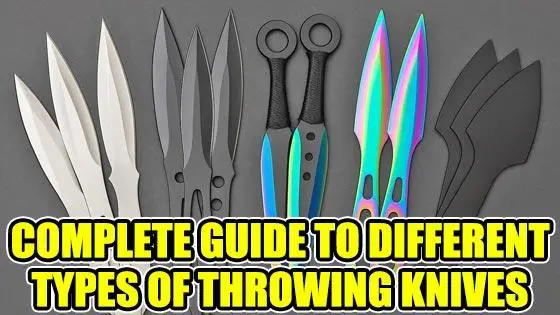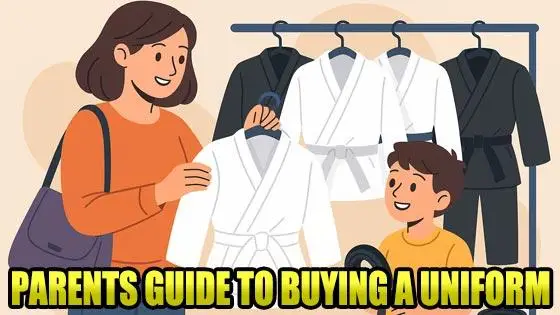Folding Knives & Pocket Knives
When it comes to pocket knives, the appeal is obvious: they combine ease of use with a robust, multipurpose blade, making them a valuable tool for a wide range of tasks. Thanks to their sleek and efficient design, folding knives are particularly well-suited for those who need a dependable cutting tool that doesn't take up much space but can handle just about anything. Whether you're cutting through cardboard, slicing fruit on a camping trip, or opening a package, a folding knife or EDC knife is always ready to help.
At the core of the folding knife's design is its versatility. Pocket knives come in a variety of sizes, typically ranging from 2 to 6 inches in blade length, and can be found in different shapes, materials, and mechanisms. This makes it easy to find the ideal folding knife to suit your specific needs, whether you need it for everyday tasks, a rugged outdoor adventure, or even for self-defense. In recent years, spring-assisted knives have grown in popularity within the folding knife category, and for good reason. With the simple push of a thumb stud or tab, these knives can open automatically with a flick of the wrist, giving you quick access to your blade. This makes spring-assisted folding knives especially useful when speed is crucial, as they offer a reliable and efficient way to deploy the blade quickly.
The convenience of folding knives is further highlighted by the array of mechanisms and locking systems available. Many EDC knives feature a liner lock or frame lock to securely hold the blade in place when it's deployed, preventing accidental closure while in use. Others feature a lockback mechanism, which has been around for decades and continues to be a favorite choice for its strong, dependable locking action. These mechanisms ensure that the blade stays securely open until you're ready to close it, providing an added level of safety when using your pocket knife in everyday situations.
Folding knives are a perfect balance between portability and functionality. When the blade is closed, the knife is small enough to be carried discreetly in your pocket or on your belt, yet when deployed, it's ready to tackle anything from cutting open boxes to preparing food at a campsite. Whether you're looking for a compact, minimalist EDC knife for light use or a more robust folding knife to handle tougher jobs, there is a folding knife out there for you. The use of premium materials, such as stainless steel for the blade and durable handles like G-10 or aluminum, ensures that these knives are made to last. With proper care, a quality pocket knife can serve you faithfully for years, making it an excellent investment.
While folding knives are primarily known for their everyday utility, they also have a storied history that dates back centuries. The concept of folding knives can be traced to ancient times, where the earliest versions were simple tools designed to be carried easily and used for a variety of tasks. The modern folding knife as we know it, however, originated in Europe during the 16th and 17th centuries. Early folding knives often featured a simple spring mechanism, and were primarily used by soldiers and hunters who needed a versatile tool for everyday tasks, such as food preparation or self-defense. These early designs featured blades that were manually opened and closed by hand, with no locking mechanism to hold the blade in place.
As time went on, innovations in materials and design transformed the folding knife into the practical tool we know today. By the 19th century, folding knives had become widely popular among civilians and adventurers. The introduction of the lock-back mechanism in the early 20th century marked a significant milestone in folding knife technology, providing a more secure locking system to prevent the blade from closing unintentionally during use. This innovation, along with the rise of stainless steel blades, ensured that folding knives would continue to evolve and improve in both design and functionality.
Today, pocket knives and folding knives are a fundamental part of modern EDC gear. Whether you're a seasoned outdoorsman, a DIY enthusiast, or simply someone who values being prepared for any situation, a high-quality folding knife can serve you in a variety of ways. Pocket knives are the ultimate tool for those who need a reliable, versatile cutting instrument but want something that fits easily into their daily routine without weighing them down. The convenience of a folding knife cannot be overstated, whether you use it to open packages, slice through rope, or cut through tough materials like plastic or leather.
In recent years, spring-assisted knives and automatic knives have gained popularity in the EDC knife community, as they offer the speed and convenience of one-handed operation. These knives open with just a flick of the wrist or a push of a button, making them especially appealing to those who want quick access to their blade in high-stress situations. While they are often associated with self-defense, they are just as useful for everyday tasks like cutting food, opening mail, or handling minor repairs around the house.
The variety of options available when it comes to folding knives is one of the reasons they have maintained their popularity for centuries. Whether you prefer a small, sleek pocketknife for light tasks or a larger, more rugged folding knife for tough outdoor use, there is something for everyone. Many folding knives even come with multiple blades or additional features like screwdrivers or can/bottle openers, making them even more versatile.
For those looking for a gift that's both thoughtful and practical, folding knives are an excellent choice. Whether you're buying for a hunter, an adventurer, or someone who simply likes to be prepared, a pocket knife makes for a timeless and functional gift. With an abundance of styles, sizes, and designs available, you're sure to find the perfect pocketknife to match the recipient's needs and personal style.
Overall, pocket knives and folding knives have proven themselves to be more than just a tool; they're a reliable companion for any task, whether big or small. With their blend of portability, versatility, and ease of use, folding knives remain one of the most popular and essential tools in the world of EDC gear. Whether you're using it for daily tasks or more serious situations, a well-chosen folding knife can be an invaluable part of your everyday carry collection.
Are Pocket Knives Legal to Carry?
The legality of carrying a pocket knife varies significantly depending on where you are located. Knife laws can be complex and are influenced by factors such as local regulations, blade length, type of knife, and how you intend to carry it. While carrying a pocket knife is legal in many places, there are numerous rules and exceptions that you need to be aware of before carrying one in public. It's important to familiarize yourself with the specific laws of your state, city, or country to avoid any legal trouble.
Factors That Influence Pocket Knife Legality:
- Blade Length: The length of the blade is one of the most common restrictions when it comes to carrying a pocket knife. Many jurisdictions have laws that restrict the maximum blade length that can be carried legally. For instance, in many states in the U.S., a pocket knife with a blade longer than 3 inches may be subject to stricter regulations, such as requiring a permit or prohibiting concealed carry. Some areas might allow knives with blades up to 4 inches or more, while others impose stricter limits. If you're unsure about the laws in your area, it's always a good idea to measure your knife's blade length and verify local regulations.
- Type of Knife (Folding vs. Fixed Blade): In general, folding knives (like most pocket knives) are treated more leniently in the eyes of the law than fixed-blade knives, as they are compact and easy to conceal. Many places have more lenient regulations for folding knives because they are generally not seen as weapons but rather as practical, everyday tools. However, this does not mean folding knives are universally legal to carry; other factors, such as blade length, locking mechanisms, and local laws, will still come into play.
- How You Carry the Knife (Open Carry vs. Concealed Carry): Whether a pocket knife is carried openly or concealed can also affect its legality. Open carry typically means that the knife is visible, such as clipped to your pocket or belt. In many places, open carrying a pocket knife with a blade under a certain length is legal. On the other hand, concealed carry (where the knife is hidden from view) may have different rules. In some areas, carrying a concealed pocket knife is illegal unless you have a specific permit. It's essential to know whether your jurisdiction has separate regulations for concealed versus open carry.
- Automatic vs. Assisted-Opening Knives: Automatic knives (which open at the push of a button) are often subject to stricter legal restrictions than manual folding pocket knives. Some areas consider automatic knives to be switchblades, which are heavily regulated or outright banned in certain states or countries. On the other hand, spring-assisted knives, which require the user to manually initiate the opening action before the spring fully deploys the blade, are usually less regulated and may be legal to carry in more places. It's always a good idea to check whether automatic knives are included under local switchblade laws or whether they are treated separately.
Country-Specific Legalities:
- United States: In the U.S., knife laws vary widely from state to state, and even within different cities or counties in the same state. Some states have very lenient laws, allowing the open carry of pocket knives with blades up to 4 inches, while other states impose more stringent regulations on what kinds of knives you can carry and how. States like Texas, for example, are generally more permissive about carrying knives, while places like New York City have very strict regulations about knife types, blade lengths, and where you can carry them. Always check your state's specific knife laws before carrying a pocket knife.
In addition to state laws, local ordinances can also impose stricter regulations, so it's important to research the specific city or municipality where you live or are visiting. For instance, many cities prohibit the carry of any blade longer than 2.5 or 3 inches within city limits.
Concealed carry of a pocket knife is also subject to restrictions in some states. In some places, if the blade is over a certain length or the knife has a locking mechanism, it may require a concealed carry permit. - United Kingdom: The laws in the UK are stricter when it comes to knives. Carrying a knife in public without a good reason is illegal, and this includes pocket knives. A typical pocket knife can be carried, but the blade length cannot exceed 3 inches. Additionally, knives that open automatically (i.e., switchblades) are strictly regulated and are generally illegal to carry. A "good reason" for carrying a knife may include things like work requirements (e.g., if you're a fisherman or a gardener), but carrying a pocket knife for self-defense or recreational purposes is typically not considered a valid reason.
- Canada: In Canada, laws regarding pocket knives are somewhat similar to those in the U.S. However, Canada generally has stricter regulations on knives that open automatically. As a rule of thumb, carrying a pocket knife with a blade under 3 inches is generally legal in Canada, but anything longer may raise legal questions. Automatic knives and switchblades are prohibited in Canada, and there are legal consequences for carrying them in public without a valid reason.
Important Considerations:
- Traveling Across Borders: If you're traveling across state or national borders, it's important to know that knife laws can change from one jurisdiction to another. For example, what may be legal in one state or country could be illegal in the next. Always check the laws of the place you're visiting, as different states or countries may have varying regulations about what types of knives are allowed to be carried and where.
- Intended Use of the Knife: The intended use of a pocket knife may also influence its legal status in some areas. Some regions might allow pocket knives for specific activities, such as camping or fishing, while others might ban them entirely if they are considered to have self-defense potential. Always be prepared to explain the purpose of carrying your pocket knife if questioned by law enforcement.
In summary, pocket knives are legal to carry in many parts of the world, but you should always be aware of the specific laws in your location. Factors such as blade length, the type of knife, how you carry it, and whether it is automatic or assisted-opening can all impact the knife's legal status. To ensure you are carrying your pocket knife legally, check your local laws, be mindful of restrictions on concealed carry, and avoid carrying knives that exceed the permissible blade length or fall under special restrictions like switchblades.
When in doubt, it's always safer to carry a pocket knife that complies with local regulations and is appropriate for the activities you plan to use it for.
How do I properly maintain my pocket knife or folding knife?
Proper maintenance is essential for ensuring that your pocket knife or folding knife remains in top condition for years to come. Whether you use it every day or only occasionally, following these simple maintenance steps will help you get the most out of your blade.
- Keep it Clean: After each use, clean your folding knife to remove dirt, debris, and any oils or chemicals it may have come in contact with. Use warm water and mild soap to wash the blade, but avoid submerging the knife entirely in water for long periods. For stubborn residue, a toothbrush or soft cloth can be used to scrub the blade gently. Make sure the knife is completely dry before closing it to avoid rusting.
- Lubricate Moving Parts: Folding knives rely on pivots and moving parts, which can wear down or become stiff over time. Apply a small amount of knife oil or lubricant to the pivot point, and make sure the blade moves smoothly. This will help keep your knife opening and closing with ease, especially for spring-assisted knives or knives with a complex locking mechanism.
- Sharpen the Blade: A dull blade can make even the most high-quality folding knife less effective. Use a sharpening stone, ceramic rod, or a sharpening system to maintain the edge of your knife. For regular use, a light sharpening every few months will keep the blade in good working condition. However, if the blade becomes significantly dull, a more thorough sharpening may be needed.
- Check the Locking Mechanism: The locking mechanism in your folding knife is a critical safety feature. Regularly check that the lock functions correctly and the blade stays securely in place when open. If the lock feels loose or fails to engage, it might need repair or adjustment. Always follow the manufacturer's guidelines for adjusting or maintaining the locking system.
- Avoid Excessive Force: Folding knives, especially smaller pocket knives, are designed for precision cutting rather than heavy-duty tasks. Avoid using your knife for tasks it wasn't designed for, such as prying or twisting, as this can damage both the blade and the locking mechanism. If you need a heavy-duty tool, consider using a fixed-blade knife instead.
- Storage: When not in use, store your folding knife in a dry, cool place. Avoid leaving it in damp or humid environments, as moisture can cause rusting. Many knife owners use protective pouches or sheaths to prevent any accidental damage or dulling from contact with other objects in a bag or pocket.
By following these simple steps, you can extend the lifespan of your folding knife and ensure it's ready to perform when you need it most.




























